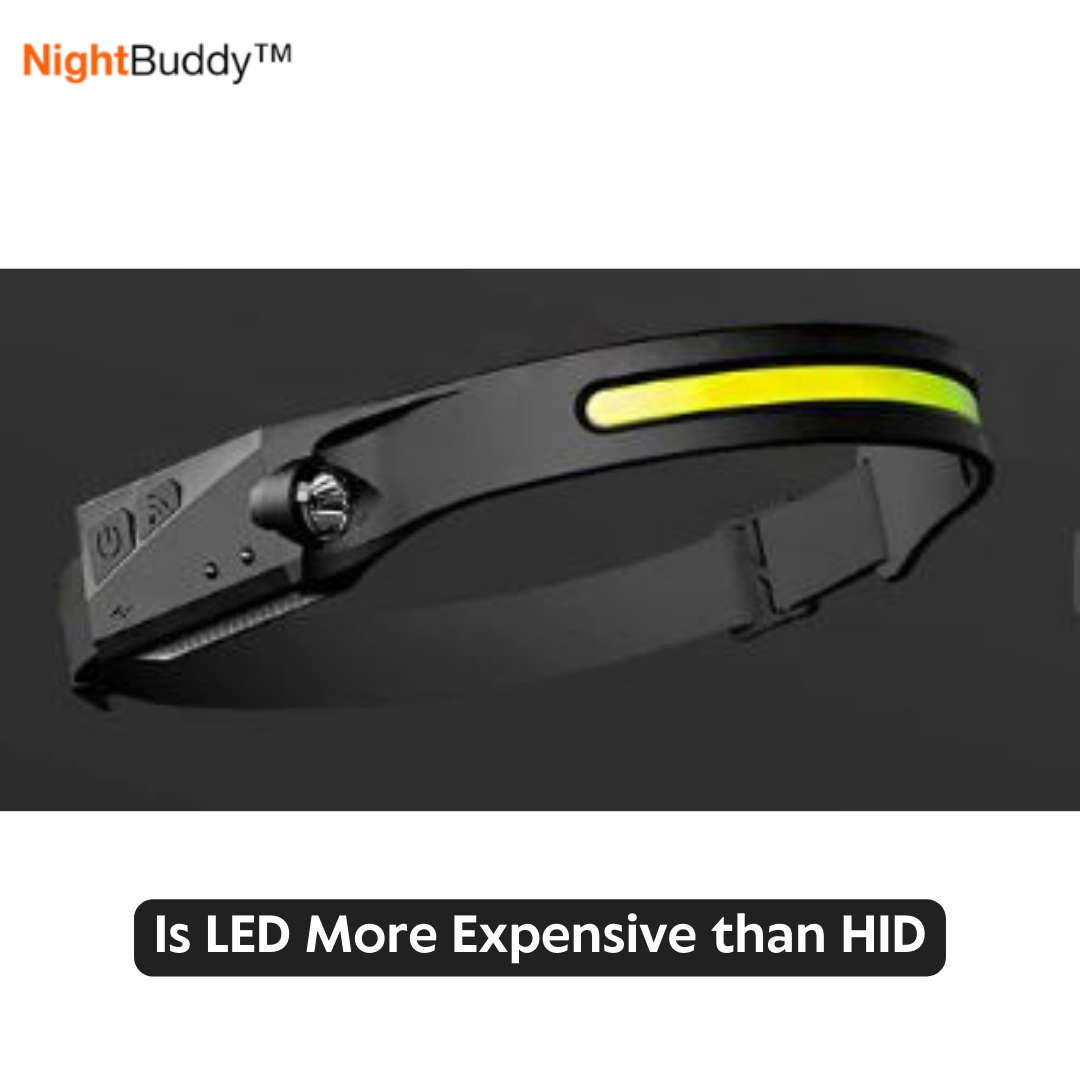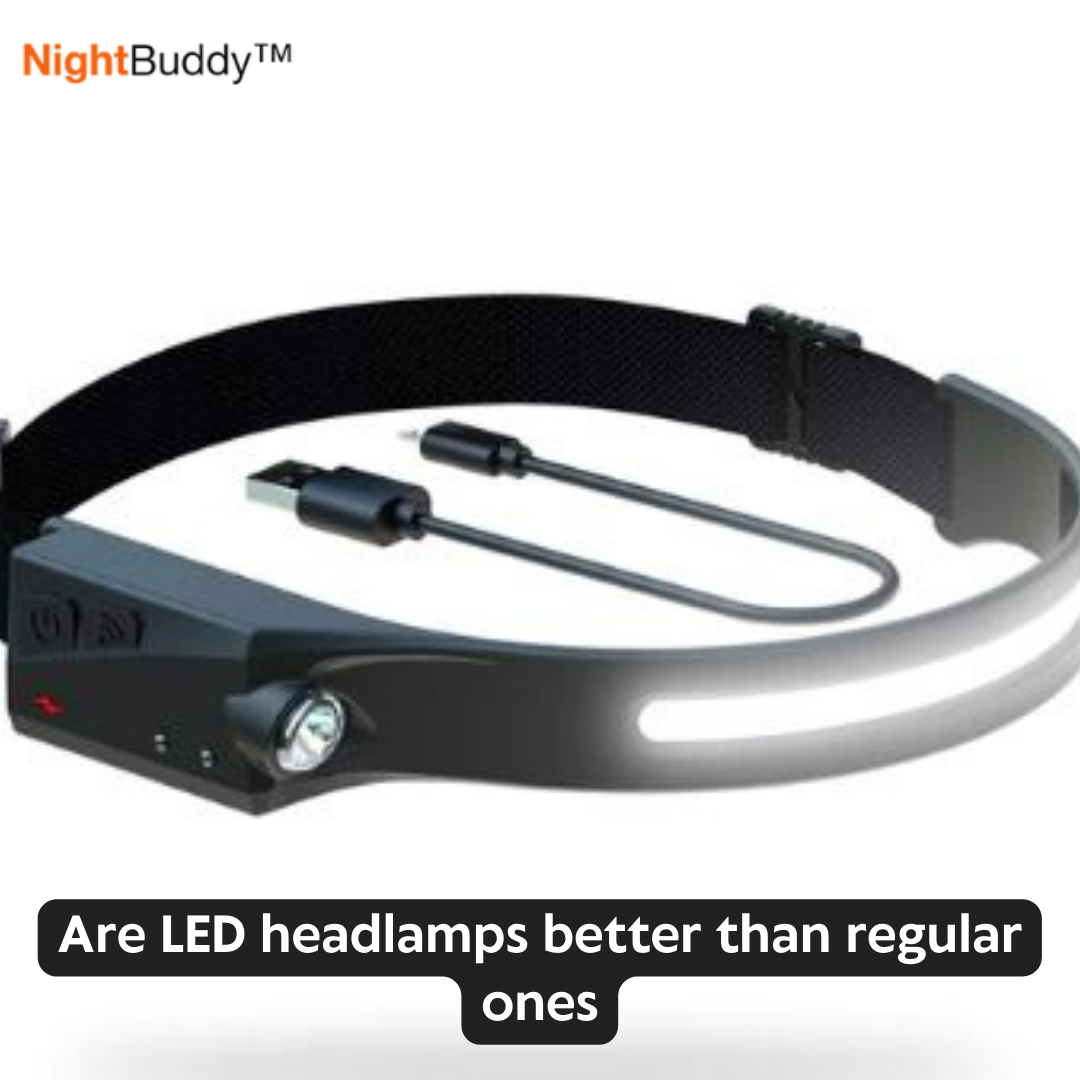Headlamps are an essential piece of gear for hikers, campers, and adventurers who want to explore the great outdoors after the sun goes down. However, with so many different types of headlamps available, it can be challenging to know which one is the best fit for your needs.
In this article, we'll explore the different types of headlamps and their key features to help you choose the perfect one for your next adventure.
History of headlamps
Headlamps have been in use since the early 1900s, although the early versions were bulky and not very effective. The first headlamp designs were powered by acetylene gas and were used primarily in the mining and railway industries. In the 1920s, the first electric headlamps were introduced and quickly gained popularity in the automotive industry.
These early electric headlamps used incandescent bulbs and were relatively weak, producing only a few hundred lumens of light. However, they were an improvement over the earlier acetylene headlamps, which produced a dim yellowish light.
In the 1960s, halogen bulbs were introduced, which were more efficient and produced brighter light. In the 1980s, LED technology was developed and began to be used in headlamps, providing a longer battery life and brighter, more efficient light.
Today, headlamps are widely used in a variety of industries, including outdoor recreation, construction, mining, and emergency services. They come in a variety of designs, from simple and lightweight to high-powered and feature-rich.
How many types of headlamps are there?
There are four main types of headlamps and each of them comes with its own advantages. Before you buy any please get full information about it. You can also buy quality headlamps and other lighting solutions from NightBuddy, one of the leading brands. The following are the four types of headlamps explained in detail:
#1. Standard headlamps

Standard headlamps are the most commonly used type of headlamp and are suitable for a variety of outdoor activities such as camping, hiking, and fishing. They are typically powered by batteries and come with a single beam that ranges from 100-300 lumens.
The beam can illuminate up to 50-100 meters, making it suitable for general outdoor activities that do not require excessively bright light.
One of the most significant advantages of standard headlamps is their affordability. They are relatively inexpensive compared to other types of headlamps, making them an excellent choice for budget-conscious outdoor enthusiasts. They are also easy to use, and most models come with adjustable straps, making them comfortable to wear for extended periods.
The battery life of standard headlamps can vary depending on the model and the brightness level used. They can last anywhere from 8-20 hours, which is sufficient for most outdoor activities. However, it is always advisable to carry extra batteries or a power bank when using a standard headlamp to ensure that you have enough power to last through the night.
Standard headlamps are usually straightforward to operate and come with a single button or switch that controls the on/off and brightness settings. Some models may have additional features such as a red light mode for night vision or a flashing mode for emergency situations.
Standard headlamps are an excellent choice for general outdoor activities and are perfect for those who are new to using headlamps. They are affordable, easy to use, and have light bulbs that emit sufficient beam range for most outdoor activities.
If you are planning to embark on more challenging outdoor adventures or need a brighter light and more powerful beam, you may want to consider a high-powered headlamp instead.
#2. High-Powered headlamps

High-powered headlamps are a common type designed for more demanding outdoor activities such as mountaineering, caving, and search and rescue. These headlamps are typically more expensive than standard headlamps but are built to withstand harsh environments and provide a brighter and more powerful beam.
High-powered headlamps are the brightest type as they have a much higher lumen output, typically ranging from 500-1000 lumens, which can illuminate up to 150-200 meters. This makes them ideal for more challenging outdoor activities that require a brighter and more focused beam. The high-intensity discharge can help you navigate through rocky terrain, dense forests, or dark caves with ease.
These headlamps often come with additional features such as multiple light beam settings, rechargeable batteries, and durable construction. The multiple beam settings allow you to adjust the brightness level to suit your needs, while the rechargeable batteries ensure that you always have enough power to last through your outdoor adventure.
The construction of high-powered headlamps is typically more rugged and durable than standard headlamps. They are built to withstand harsh environments, extreme temperatures, and even water. This makes them ideal for outdoor enthusiasts who are planning to embark on more challenging adventures.
A significant advantage of high-powered headlamps is their versatility. They can be used for a variety of outdoor activities such as camping, hiking, and fishing, as well as more demanding activities such as mountaineering and search and rescue. They are also suitable for use in emergency situations and can be a valuable addition to any emergency preparedness kit.
#3. Ultralight Headlamps

Ultralight headlamps are popular among outdoor enthusiasts who prioritize weight and portability. These headlamps are typically smaller, lighter, and more compact than standard and high-powered headlamps, making them ideal for backpacking, cycling, and other activities that require minimal gear.
Ultralight headlamps are usually powered by coin cell batteries, which are smaller and lighter than the AA or AAA batteries used in standard and high-powered headlamps. This helps to reduce the overall weight of the headlamp, making it easier to carry on extended backpacking trips or cycling adventures.
Despite their smaller size and lower weight, ultralight headlamps still provide a sufficient beam range for most outdoor activities. They typically have a lumen output of 100-200 and can illuminate up to 30-50 meters, making them suitable for general outdoor activities such as setting up camp or cooking meals after dark.
Ultralight headlamps are also designed with convenience in mind. They are easy to use and often come with a single button or switch that controls the on/off and brightness settings. Many models also have adjustable straps or clips that allow you to attach them to your backpack or clothing for easy access.
An advantage of ultralight headlamps is their portability. They can easily fit into your backpack or pocket, making them a convenient and essential piece of gear for any outdoor adventure. They are also affordable and typically cost less than standard or high-powered headlamps, making them an excellent choice for budget-conscious outdoor enthusiasts.
#4. Running headlamps

Running headlamps are meant specifically for runners who need a lightweight, comfortable, and convenient source of light when running in low-light conditions. These headlamps are typically smaller and lighter than standard headlamps and are designed to stay in place during high-intensity activities. The best example is the NightBuddy™ 230º LED Headlamp.
Running headlamps are usually powered by rechargeable batteries, which provide a more reliable source of power than traditional alkaline batteries. The batteries are often located at the back of the headband to balance the weight of the headlamp and reduce any discomfort.
One of the key features of running headlamps is their bright, focused beam. They typically have a lumen output of 100-300 and can illuminate up to 50-100 meters, providing runners with a clear view of the path ahead. Some models also have multiple beam settings, allowing runners to adjust the brightness level to suit their needs.
Running headlamps are also designed for comfort and convenience. They are typically lightweight and have adjustable straps that fit snugly around the head, ensuring that they stay in place during high-intensity activities. Some models even have sweat-wicking headbands to keep runners cool and dry.
In addition to their convenience and comfort, running headlamps are also designed with safety in mind. They help runners stay visible to motorists and other pedestrians, reducing the risk of accidents during early morning or late evening runs. Some models also have flashing or strobe modes, which can be useful in emergency situations.
Read more: Are LED headlamps better than regular ones?
Why You Need a Headlamp
Headlamps are essential for any outdoor activity that takes place in low-light conditions. Here are some reasons why you need a headlamp:
- Safety: A headlamp provides a hands-free source of light, making it easier to navigate in the dark and reducing the risk of accidents. It also helps you stay visible to others, making it an essential safety tool.
- Convenience: A headlamp frees up your hands to perform tasks such as setting up camp, cooking, or reading a map. This makes it an essential tool for any outdoor activity, whether you're camping, hiking, or fishing.
- Comfort: A headlamp provides a more comfortable and convenient source of light than a handheld flashlight. It allows you to keep your hands free and reduces the strain on your arms from holding a flashlight.
- Versatility: Headlamps come in various shapes and sizes and are suitable for a wide range of activities, from camping and hiking to running and fishing.
- Emergency Preparedness: A headlamp is an essential item for emergency preparedness. It can provide light during power outages or natural disasters, making it an invaluable tool for staying safe and prepared.
How to Choose the Right Headlamp

When it comes to choosing the right headlamp, there are several factors to consider. Here are some key features to keep in mind when shopping for a headlamp:
- Brightness: Consider the lumen output of the headlamp and the beam distance it can illuminate. This will depend on the type of activity you plan to use the headlamp for.
- Battery Life: Think about the duration of your activity and choose a headlamp with enough battery life to last for the entire duration. Check the battery type, capacity, and whether it is a rechargeable headlamp.
- Weight and Comfort: A headlamp that is too heavy or uncomfortable to wear for extended periods can be a distraction. Consider the design, headband material, and adjustability to ensure a comfortable fit.
- Water Resistance: If you plan to use the headlamp in wet or humid conditions, choose a headlamp that is water-resistant or waterproof.
- Additional Features: Some headlamps have additional features such as multiple beam settings, red light modes, strobe modes and whether they come with an external battery pack. Consider these features based on your intended use.
- Price: Headlamp prices can vary greatly depending on the features and quality. Consider your budget and choose a headlamp that meets your requirements within your price range.
Read more: Is LED more expensive than HID?
Headlamp Beam Types
Headlamps typically come in different beam types that can be adjusted to suit different activities and situations. Here are some common beam types to look for:
- High Beam: A high beam provides maximum brightness and is useful for activities that require a lot of light, such as hiking or mountain biking.
- Low Beam: A low beam is useful for activities that require less light, such as reading a map or setting up camp.
- Strobe Mode: A strobe mode is useful for attracting attention in an emergency situation, such as when signaling for help.
- Flood Beam: A flood beam provides a wide, even beam of light that illuminates a broad area. It is useful for activities such as camping or walking on a trail.
- Spot Beam: A spot beam provides a concentrated beam of light that illuminates a smaller area. It is useful for activities that require a more focused beam of light, such as hiking or climbing.
- Combination Beam: Some headlamps have a combination beam that includes both flood and spot beams, providing versatility for different activities and situations.





Leave a comment
This site is protected by hCaptcha and the hCaptcha Privacy Policy and Terms of Service apply.